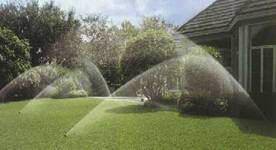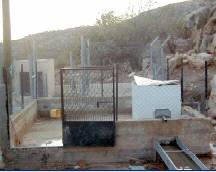

Water
Water in Palestine

|
West Bank Water Usage
- Of the water available from West Bank aquifers, Israel uses 73%, West Bank Palestinians use 17%, and illegal Jewish settlers use 10%.
- While 10-14% of Palestine’s GDP is agricultural, 90% of them must rely on rain-fed farming methods. Israel’s agriculture is only 3% of their GDP, but Israel irrigates more than 50% of its land.
- Three million West Bank Palestinians use only 250 million cubic meters per year (83 cubic meters per Palestinian per year) while six million Israelis enjoy the use of 1,954 million cubic meters (333 cubic meters per Israeli per year), which means that each Israeli consumes as much water as four Palestinians. Israeli settlers are allocated 1,450 cubic meters of water per person per year.
- Israel consumes the vast majority of the water from the Jordan River despite only 3% of the river falling within its pre-1967 borders. Israel now diverts one quarter of its total water consumption through its National Water Carrier from the Jordan River, whereas Palestinians have no access to it whatsoever due to Israeli closures.
|
“There is no reason for Palestinians to claim that just because they sit on lands, they have the rights to that water.” – Mr. Katz-Oz, Israel’s negotiator on water issues [1] |
International Law
- Under international law it is illegal for Israel to expropriate the water of the Occupied Palestinian Territories for use by its own citizens, and doubly illegal to expropriate it for use by illegal Israeli settlers [2].
- Also under international law, Israel owes Palestinians reparations for past and continuing use of water resources. This should include interest due to loss of earnings from farming.
Israeli Actions
- Israel does not allow new wells to be drilled by Palestinians and has confiscated many wells for Israeli use. Israel sets quotas on how much water can be drawn by Palestinians from existing wells.
|
- When supplies of water are low in the summer months, the Israeli water company Mekorot closes the valves which supply Palestinian towns and villages so as not to affect Israeli supplies. This means that illegal Israeli settlers can have their swimming pools topped up and lawns watered while Palestinians living next to them, on whose land the settlements are situated, do not have enough water for drinking and cooking.
- Israel often sells the water it steals from the West Bank back to the Palestinians at inflated prices.
- During the war of 1967, 140 Palestinian wells in the Jordan Valley were destroyed to divert water through Israel’s National Water Carrier. Palestinians were allowed to dig only 13 wells between 1967 and 1996, less than the number of wells which dried up during the same period due to Israel’s refusal to deepen or rehabilitate existing wells.
- The Gaza strip relies predominately on wells that are being increasingly infiltrated by salty sea water because Israel is over-pumping the groundwater. UN scientists estimate that Gaza will have no drinkable water within fifteen years.
Settlers
|
- In Madama village 50km north of Jerusalem settlers from Yizhar settlement have repeatedly vandalized the villager’s only source of water. They have poured concrete into it, vandalized the connecting pipes and even dropped disposable diapers and other hazardous waste into the springs. Three villagers have been attacked by settlers while trying to repair the water source [3].
- Constant settler attacks on the community of Yanoun, Nablus governorate, located next to the Itamar settlement, peaked in October 2002 when masked settlers charged into the village with dogs and caused significant damage to the water network, several roof tanks, and the local spring, which is considered to be the main source of water for the community. The main line supplying water to the community from the main spring, as well as the pump, reservoir, fittings and valves were all damaged by settlers. Residents of the community were forced to buy water from tankers from the neighboring community. Tanker access was very difficult due to Israeli closures and checkpoints as well as settler threats and terror which included shootings, beatings, and harassment [4].
Water and the Wall
|
- Many of the most important underground wellsprings in the West Bank are located just to the east of the Green Line dividing Israel from Palestine. Israel has built the Wall not only to annex land but also to annex many of these wells in order to divert water to Israel and illegal West Bank settlements.
- The Wall is not only an Apartheid Wall, but also a water wall. Some of the largest Israeli settlements (such as Ariel and Qedumin) are built over the Western mountain aquifer, directly in the middle of the northern West Bank agricultural districts, and this is exactly where the wall cuts deepest into Palestinian territory to surround and annex this vital water source.
- The building of the Wall has caused the village of Falamya in Qalqiliya district to lose its main source of water. In Jayyous, a village near Falamya, all of its seven water wells have been annexed or destroyed by the Apartheid Wall.
- In the West Bank, around 50 groundwater wells and over 200 cisterns have been destroyed or isolated from their owners by the Wall. This water was used for domestic and agricultural needs by over 122,000 people. To build the Wall, 25 wells and cisterns and 35,000 meters of water pipes have also been destroyed [5].
- In 2003, the losses incurred by Palestinian farmers due to the Wall diverting water resources has been 2,200 tons of olive oil, 50,000 tons of fruit, and 100,000 tons of vegetables [6].
- The Wall is obstructing many water run-off flows in the Qalqiliya region that normally divert water to prevent flooding. During heavy rains in February 2005, Israeli soldiers refused to open drainage pipes in Qalqiliya, which led to heavy flood damage to crops and homes there. The Wall also caused severe flooding in Zububa and other villages.
Under the conditions brought about by the siege imposed by Israeli occupation forces, civilians in the occupied territories are suffering from lack of access to necessary resources for the maintenance of their daily needs and basic health. We have reached a state of emergency in the water sector in the Occupied Territories. We must call for an immediate end to the siege upon the water sector.
Endnotes
- www.palestinecenter.org
- Article 1(2) of the 1966 United Nations Human Rights Covenants proclaims: “All peoples may, for their own ends, freely dispose of their natural wealth and resources without prejudice to any obligations arising out of international economic co-operation, based on the principle of mutual benefit and international law. . .”
- http://www.Oxfam.org, (November 2003)
- “Incursions & Destruction,” Palestinian Hydrology Group
- The Water and Sanitation Hygiene Monitoring Project (WaSH MP)
- http://www.globalpolicy.org
| Related Articles |
Occupied Salfit: Living in the Stench of Settlers’ Sewage and in the Shadow of the Apartheid Wall |
| Additional Resources |
| Organizations |
| Stay Informed |
|
Sign up for our mailing list and receive an email whenever we post a new article on our news site, Israel-Palestine News. |
This website is printer-friendly. Please Print this article and share it with your friends and family.




